How to Implement Railway Sustainability Solutions for a Greener Future
Railway Sustainability Solutions for a Greener Future by Railinno
In a world where climate change threatens our very existence, implementing greener railway practices emerges as a critical solution for a sustainable future. The transportation sector is a major contributor to carbon emissions, with railways sustainability offering a more environmentally friendly alternative to cars and planes.
However, the transition to greener practices is not without its challenges. From upgrading infrastructure to adopting new technology, there are numerous hurdles to overcome.
Yet, the benefits are undeniable. By reducing emissions and promoting cleaner energy sources, greener railways hold the key to a more sustainable world.
In this article, we will delve into the innovative solutions and strategies needed to revolutionize railway sustainability. From electrification to waste reduction, every step towards a greener future is crucial.
So let’s embark on this visionary journey together, as we pave the way for a more sustainable and environmentally friendly railway system.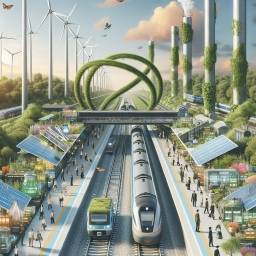
Table of Contents
Innovative Technologies for Track Maintenance
The railway industry is moving towards a greener future by using renewable energy sources and advanced technologies for maintenance. By focusing on eco-friendly stations, waste management, and recycling, companies can enhance sustainability. Collaboration is key in driving sustainable development, as partnerships can lead to better solutions. It is essential to incorporate sustainable practices into every part of rail operations to reduce environmental harm and build a resilient transportation system for future generations.
Renewable Energy Sources for Trains
Trains are becoming more sustainable and efficient by using solar, wind, or hydro energy. This not only helps the environment but also lowers costs. With new technology, trains can now use renewable energy systems, leading to a greener future. Innovative approaches like regenerative braking and energy storage systems are changing how trains use renewable energy. Regenerative braking lets trains turn kinetic energy into electric power, which can be saved for later. Pairing this with energy storage systems like batteries or capacitors helps trains save energy and reduce reliance on traditional sources. Embracing these advances can make the railway industry more sustainable and energy-efficient.
Eco-Friendly Train Stations and Facilities
Eco-friendly train stations focus on reducing their environmental impact while providing passengers with a pleasant travel experience. They incorporate innovative design and technology such as solar panels, rainwater harvesting, and smart waste management for sustainability. These stations also aim to raise public awareness about environmental issues through educational displays and interactive exhibits. By promoting conservation and eco-conscious behaviors, they inspire commuters and visitors to live sustainably.
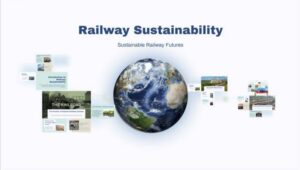
Support for sustainable transportation and environmental education is crucial in creating a more environmentally conscious society. Eco-friendly train stations play a significant role in achieving this goal. Their focus on sustainability, innovation, and education make them essential in building a greener future for all.
Waste Management and Recycling Initiatives
According to the International Union of Railways (UIC), implementing effective waste management strategies helps reduce environmental impact and promote a greener future for rail transportation. The UIC is at the forefront of providing guidance and best practices for waste reduction and recycling within the railway sector.
By adopting comprehensive waste management programs, rail operators can minimize the generation of waste, implement recycling protocols, and ensure proper disposal of materials. Encouraging a culture of environmental responsibility among staff and passengers is also crucial in maintaining cleanliness and sustainability at train stations and along railway tracks. Through continuous improvement and innovation in waste management practices, the railway industry can contribute significantly to environmental conservation and sustainable development.
Railway Sustainability Solutions for a Greener FutureCollaboration for Railway Sustainability Development
Switching to greener practices on railways can decrease carbon footprints, improve air quality, and support sustainable travel. By electrifying tracks, operating more efficiently, and protecting biodiversity, these goals can be reached. Making the switch to greener practices on railways is a crucial step towards reducing environmental impact and promoting sustainability in transportation. Electrifying tracks and operating more efficiently are key strategies in achieving these goals. In addition to reducing carbon footprints and improving air quality, greener practices on railways also have the potential to protect and preserve biodiversity along railway lines. By implementing measures to ensure the protection of wildlife and ecosystems, the railway industry can contribute to overall environmental conservation efforts.
Revolutionizing Rail Transportation with Railinno AI: Building a Sustainable Future for the Railway Industry
Railinno AI In Rail is revolutionizing the railway industry with its innovative approach to sustainability. By utilizing advanced artificial intelligence technology, Railinno is able to analyze vast amounts of data in real-time, predict maintenance needs before they arise, and optimize routes for maximum efficiency.
This not only saves rail operators time and money but also helps to reduce their carbon footprint. With Railinno’s cutting-edge solutions, the future of rail transportation is looking brighter than ever.
Gone are the days of outdated, inefficient systems – Railinno AI In Rail is paving the way for a more sustainable and environmentally-friendly future. Join us in our mission to create a greener, more efficient railway industry with Railinno AI In Rail.
Recap
Railway sustainability solutions are no longer a distant dream, but a pressing reality that must be addressed with urgency and innovation. The future of transportation depends on our ability to reduce carbon emissions, minimize resource consumption, and embrace renewable energy sources.
It is time to revolutionize the way we think about railways, not just as a means of getting from point A to point B, but as a crucial component of a sustainable ecosystem. By investing in electrified tracks, energy-efficient trains, and smart technologies, we can create a more efficient and environmentally friendly railway system for generations to come.
The time for action is now, and the railway industry must embrace its role as a pioneer in sustainable transportation. Let us not merely follow in the footsteps of the past, but blaze a new trail towards a greener, more sustainable future for all.
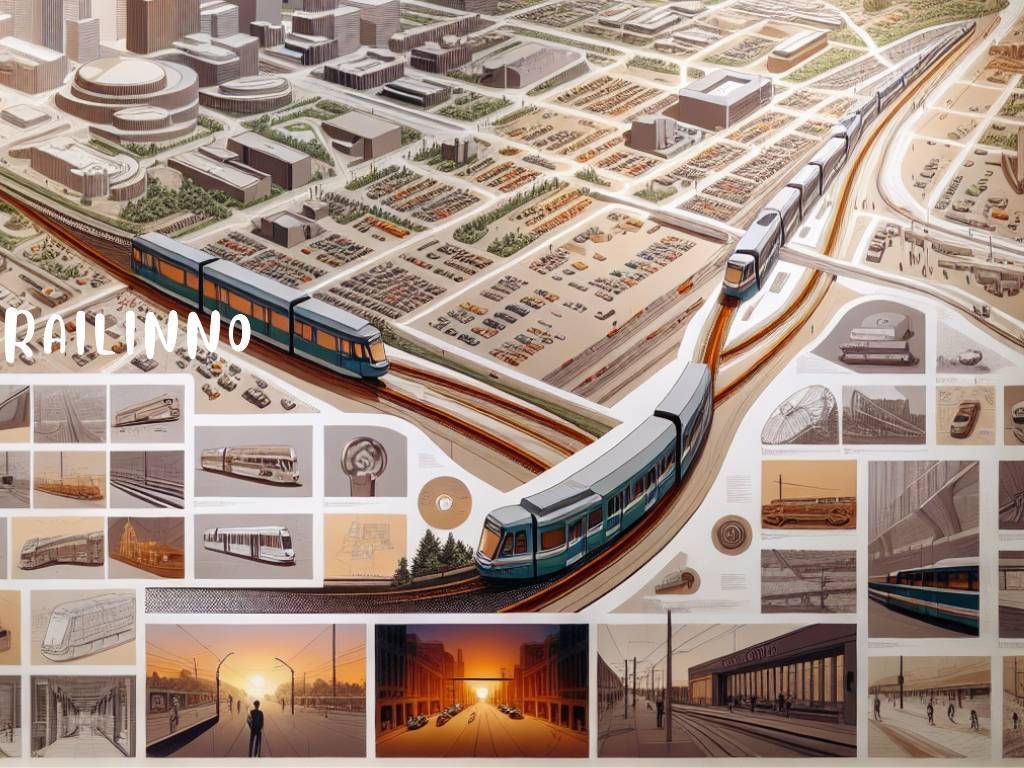
More Articles
Categories

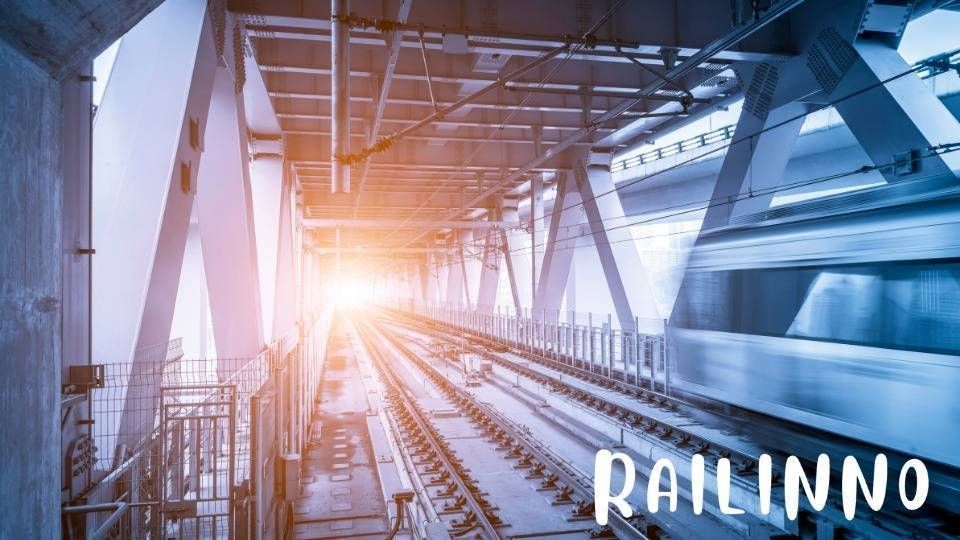

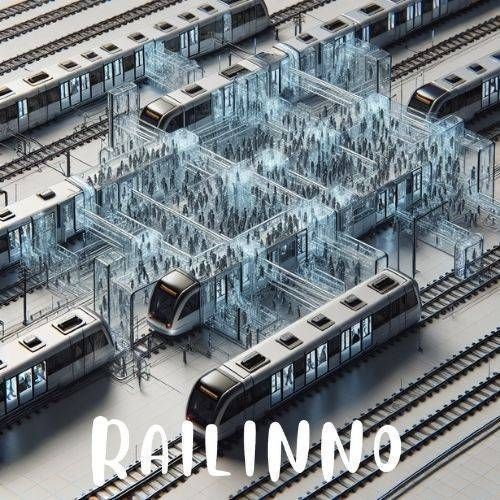

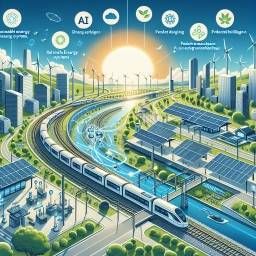


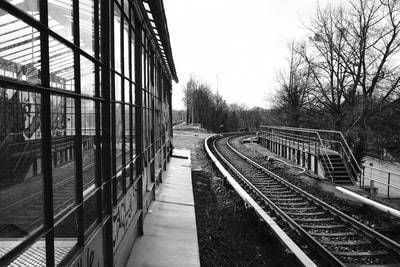
Leave a Reply